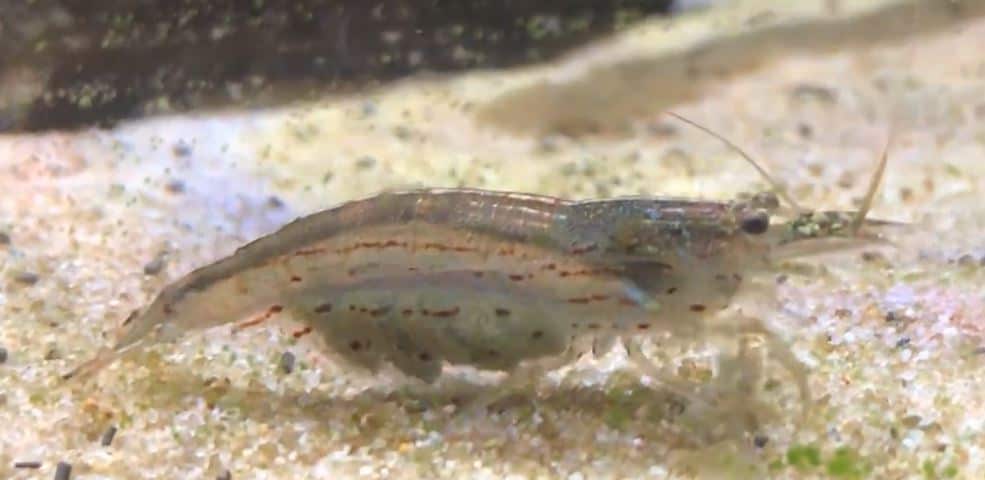Having an aquarium can be a rewarding experience, but it requires dedication and maintenance. One of the most challenging aspects of aquarium care is managing brown algae, which can quickly overgrow and become difficult to remove. To help simplify this process, this article provides an essential guide to managing brown algae in aquariums. It covers common causes of brown algae buildup, preventative measures for avoiding it, and strategies for removing algae when it does form.
Identifying The Causes Of Diatom Growth
If you’ve ever noticed an unsightly brown film coating the surfaces of your aquarium, chances are high that diatoms have taken up residence in your aquatic haven. Identifying the causes behind their growth is essential for diatom prevention and maintaining a healthy environment for your fishy friends.
Factors such as filter efficiency, substrate selection, nutrient imbalances, and CO2 fluctuations can all contribute to this common problem. But don’t worry – just a few changes, and you’ll be well on your way to keeping these pesky algae at bay.
One key aspect to consider when battling against diatom growth is how effectively your aquarium’s filter functions. A properly working filtration system helps maintain water quality by removing excess nutrients that can fuel unwanted algae blooms.
Additionally, selecting the right substrate – especially one that doesn’t leach silicates into the water – will further deter diatom development. Live plants also bring numerous benefits to any tank setup: they naturally compete with algae for resources while providing refuge and habitat for other organisms.
Moreover, ensuring proper CO2 levels within the aquarium prevents drastic fluctuations, which could promote algal growth. Another critical area to focus on is understanding how environmental factors like water hardness effects and temperature influence, promote, or inhibit diatoms’ proliferation.
Aquarium placement can also make a considerable difference; positioning your tank away from direct sunlight reduces the available light energy required for photosynthesis (and thus algae production).
Lastly, investing in UV sterilization equipment may protect against these relentless microorganisms by disrupting their reproductive cycle and reducing overall bloom potential. Addressing each element contributing to the diatom’s presence in your aquarium will create a more visually appealing environment and foster better living conditions for all its inhabitants – making it worth every effort!

How To Get Rid Of Brown Algae
Taking care of your aquarium is essential, especially when dealing with pesky brown algae. You can implement various algae prevention and removal methods to maintain a healthy and beautiful environment for your aquatic friends. There’s no need to worry; we have covered you with some effective chemical treatments, natural remedies, and practical tips that will help restore the balance in your tank.
Firstly, let’s focus on maintaining optimal water conditions by addressing nutrient balance and ensuring proper tank cycling. Regular monitoring and adjustments are necessary to prevent excessive nutrients from feeding the algae growth.
- Maintain appropriate levels of:
- Nitrate: Keep it below 10 ppm
- Phosphate: Aim for less than 0.02 ppm
- Perform regular partial water changes (usually around 20% every week)
- Choose suitable substrate material as it is vital in controlling nutrient buildup.
- Enhance biological filtration systems which break down waste products more efficiently.
Another key factor involves boosting the overall health of your aquarium through plants’ role, live rock benefits, and improved water circulation. Healthy aquatic plants compete with algae for nutrients, limiting their growth potential.
- Add fast-growing plant species like Hornwort or Duckweed that consume excess nitrogenous compounds.
- Incorporate live rocks into your setup as they provide additional surface area for beneficial bacteria while also acting as a natural filter medium.
- Ensure adequate water movement using powerheads or air stones to increase oxygen exchange rates and promote even distribution of nutrients throughout the tank.
If brown algae persist despite these preventive measures, don’t hesitate to explore targeted solutions such as specialized chemical treatments or investing in algae-eating organisms like snails or shrimp. These allies will feast on the unwanted invaders while contributing positively to the ecosystem within your aquarium.
With dedication and persistence, you’ll create an inviting habitat for your fish and anyone who takes delight in witnessing its thriving beauty. So keep serving your aquarium’s needs and let it flourish as you watch the brown algae problem fade away!
Maintaining Optimal Water Quality
You’ve conquered brown algae, but how do you maintain optimal water quality in your aquarium to prevent future problems? It’s all about striking the right balance! By regularly monitoring and adjusting various factors such as nutrient levels, filtration systems, and chemical treatments, you’ll create a healthy environment for your aquatic friends. Not only will this help keep your tank clean, but it’ll also provide immense satisfaction in knowing that you’re contributing positively to their well-being.
| Water Testing | Nutrient Balance | Filtration Systems |
|---|---|---|
| pH Levels | Substrate Selection | Chemical Treatments |
| Dissolved Oxygen | Aquarium Plants | Water Temperature |
Regularly testing the water is crucial in maintaining an ideal living space for your fishy friends. Make sure to monitor the pH levels, dissolved oxygen content, and temperature of the water. Keep track of these parameters with routine tests so that any necessary adjustments can be made before they become problematic. Managing nutrient balance through proper substrate selection and adding live aquarium plants will enhance the beauty and help absorb excess nutrients like nitrates – creating a more stable environment. Efficient filtration systems are also vital; consider combining mechanical, biological, and chemical methods to remove toxic substances effectively from your aquarium.
Tank cycling is another important aspect when striving for pristine water conditions in your aquarium. This process allows beneficial bacteria to establish themselves within the tank, which helps break down harmful chemicals produced by fish waste into less toxic forms – ultimately keeping everyone happy and healthy! So please pat yourself on the back whenever you diligently test those water parameters or tweak environmental variables. You’re essential in nurturing and caring for these delicate ecosystems while promoting harmony among their inhabitants.

Proper Lighting And Photosynthesis Control
Having established the importance of maintaining optimal water quality in your aquarium, let’s delve into another crucial aspect of promoting a thriving aquatic environment: proper lighting and photosynthesis control.
Ensuring that you provide adequate light for brown algae to grow properly is essential for their survival and for keeping other inhabitants (like fish and plants) happy too! By understanding how lighting spectrum, light intensity, and photoperiod duration impact photosynthesis regulation, you’ll be well on creating an ideal underwater world.
To begin with, selecting the right lighting system plays a vital role in regulating algae growth within your tank. Numerous LED options available today offer adjustable lights across different spectrums to cater specifically to your aquarium needs. For example, blue light benefits brown algae by facilitating their growth while also being less likely to encourage unwanted green algae blooms.
Furthermore, investing in timer setups can help automate the process of providing consistent light cycles for all organisms present – including natural sunlight hours when possible – ultimately fostering healthier living conditions overall.
It’s worth noting that finding the perfect balance between light intensity and photoperiod duration is key in controlling photosynthesis rates among aquatic lifeforms. Be mindful of where you place your chosen fixtures; adjustable lights should be positioned strategically throughout the tank to not focus solely on one area or cast shadows over others, inadvertently stunting growth elsewhere.
Keep experimenting until you find what works best for the type of algae you’re nurturing and any additional species sharing space with them. Remember that consistency is important – once you’ve found those sweet spots regarding lighting spectrum, intensity, and daily exposure times, stick with them whenever possible as sudden shifts may stress out our tiny friends more than we realize!
Introducing Algae-Eating Species
Not only does brown algae threaten the aesthetic appeal of your aquarium, but it can also be detrimental to its inhabitants. Wouldn’t it be lovely if you could naturally control this pesky problem while simultaneously enriching the ecosystem within your tank?
Introducing algae-eating species into your aquatic world may be the perfect solution for keeping excess algal growth at bay. Among these beneficial critters are:
- Algae-eating snails: Nerite snails thrive in fresh and saltwater environments, making them an excellent addition to any tank.
- Shrimp varieties: Amano shrimp are highly efficient algae eaters known for their voracious appetites for various types of algae.
- Fish species: Siamese algae, Otocinclus catfish, Chinese algae eaters, Plecostomus fish, mollies, guppies, and Corydoras catfish all contribute to maintaining a clean environment by consuming different forms of algae.
- Other invertebrates: Some less common options include sea cucumbers or urchins, which assist in reducing the buildup of detritus that contributes to algal growth.

By incorporating some of these hardworking creatures into your aquarium’s community, they will benefit from being provided with a natural food source that comes straight from their habitat. You’ll also foster a more balanced ecosystem inside your beloved underwater sanctuary.
Remember to research each potential candidate thoroughly before adding them to ensure compatibility with other tank mates and suitability for specific water parameters.
As stewards of our own little aquatic worlds, we are responsible for nurturing and preserving the delicate balance between flora and fauna. By introducing life forms such as Nerite snails, Amano shrimp, or even Siamese algae eaters into your tank system – you’re contributing towards creating a healthier living space where every resident thrives harmoniously together.
Embrace the joy of serving your underwater community and witness how their mutualistic relationships contribute to a thriving, algae-free aquarium.
Regular Cleaning And Maintenance Techniques
Now that you know the benefits of introducing algae-eating species to your aquarium, let’s explore additional methods for maintaining a clean and healthy aquatic environment. Regular cleaning and maintenance techniques are essential in preventing algae growth while ensuring optimal living conditions for your fish.
As someone passionate about supporting a thriving ecosystem within their tank, these simple yet effective strategies will help create harmony among its inhabitants.
Aquarium filtration systems are crucial as they aid in nutrient control and promote proper water circulation throughout the tank. This helps prevent stagnant areas where algae can thrive. Substrate selection is also essential; opting for materials like sand or fine gravel discourages debris accumulation, contributing to algae growth. Additionally, consider adding live plants to your aquarium setup as they provide aesthetic appeal and offer various benefits, such as competition against algae for nutrients, absorption of excess waste products, and increased oxygen production.
Maintaining appropriate water temperature and pH balance further deters unwanted algal blooms while fostering a stable habitat for your pets.
Aside from regular upkeep measures, a few decorative solutions serve both form and function in keeping algae at bay. Strategically placing rocks or ornaments near high-flow areas encourages better tank circulation while reducing dead zones conducive to algae buildup. Chemical treatments may be used sparingly if necessary, although it is vital to research compatibility with other lifeforms present in the tank before application.
By incorporating these preventative steps into your routine care plan – along with diligent monitoring of light exposure and adequate feeding practices – you’ll create an idyllic sanctuary teeming with vitality for all lucky enough to call it home!
Conclusion
In conclusion, we must identify the root causes of diatom growth in our aquariums and take appropriate measures to combat brown algae.
We can effectively keep these pesky organisms at bay by maintaining optimal water quality, proper lighting, introducing algae-eating species, and regular cleaning.
Remember that a well-maintained aquarium looks beautiful and ensures a healthy environment for our aquatic friends.
